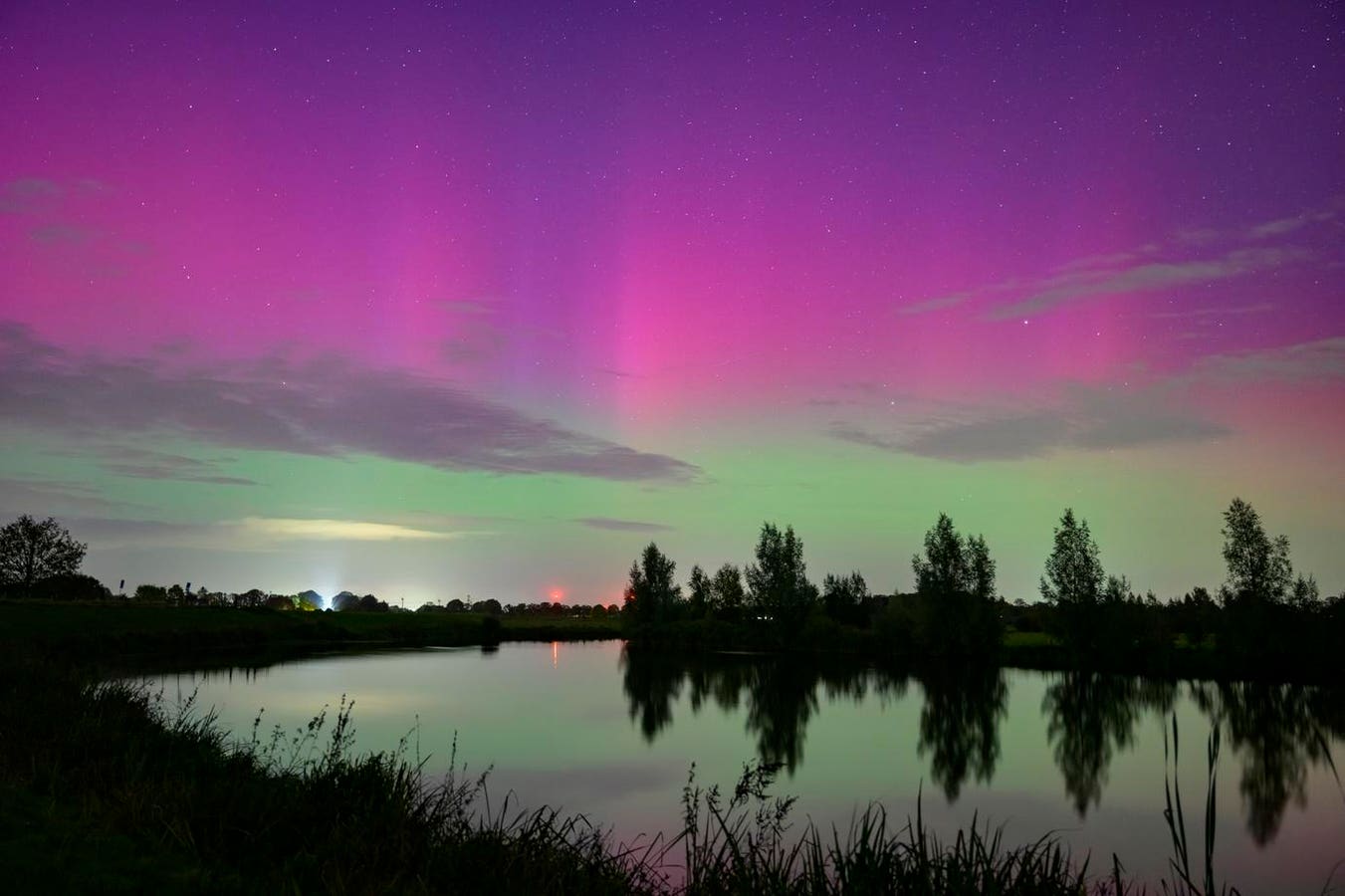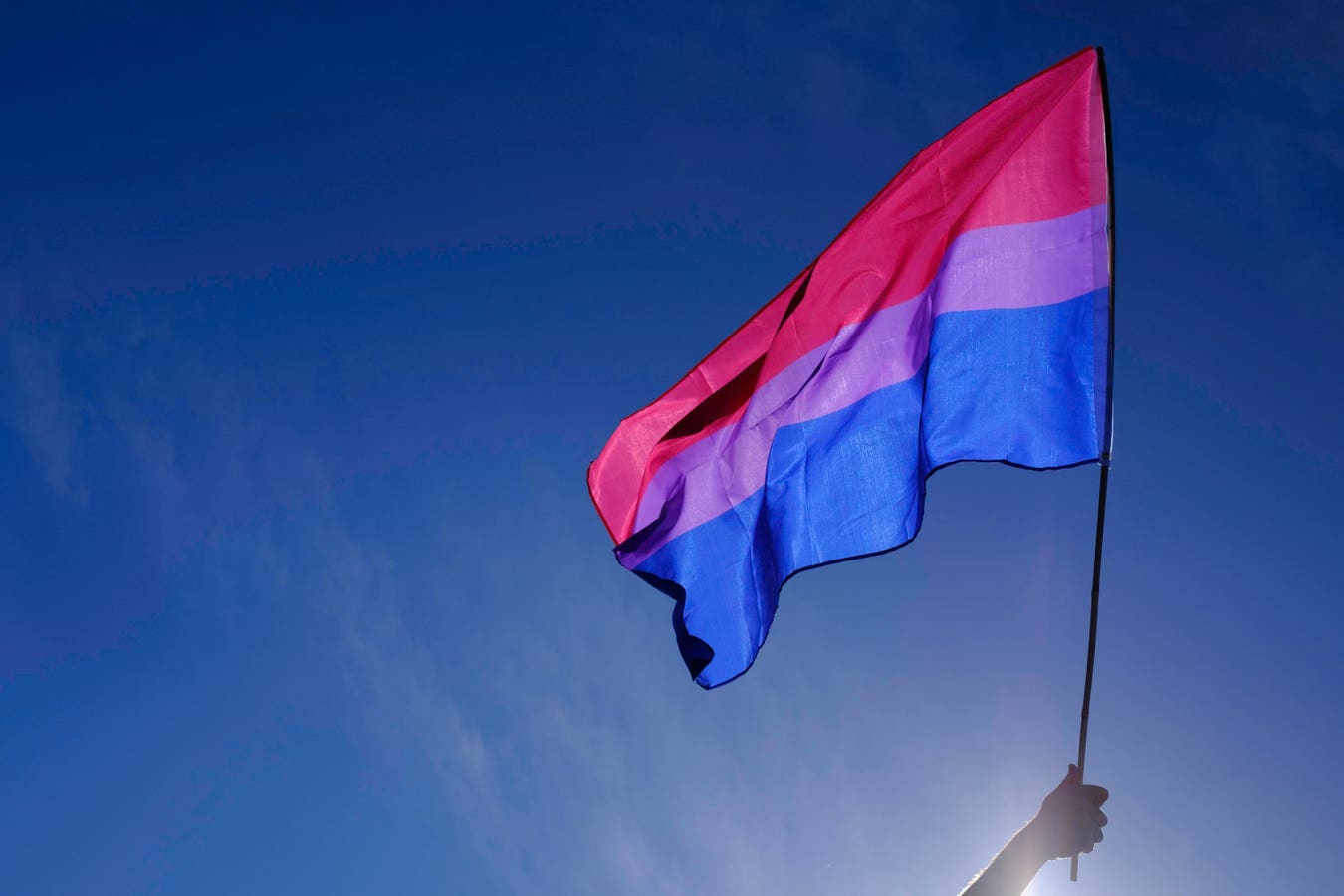Northern lights or aurora borealis In the night sky over the river Vecht in Overijssel, on October 10 in Dalfsen, The Netherlands. (Photo by Sjoerd van der Wal/Getty Images)
Getty Images
The Northern Lights may be visible in the U.S. on Tuesday and Wednesday just as the Perseid meteor shower peaks, according to a forecast by the National Oceanic and Atmospheric Administration’s Space Weather Prediction Center.
Despite the weekend’s bright full moon rising later at night to entirely true dark skies, sky-watchers in around 10 U.S. states may have a chance to see the aurora borealis on the northern horizon as “shooting stars” fall. The cause is a spate of solar flares on the sun after weeks of inactivity.
The agency’s three-day forecast indicates an uptick in geomagnetic activity overnight on Tuesday, Aug. 12 through Wednesday, Aug. 13. According to a NOAA forecast, the Kp index — which provides a rough guide to the intensity of aurora displays — may reach 4 during a G1 geomagnetic storm.
“The geomagnetic field is expected to reached active levels, with a chance for G1 (Minor) geomagnetic storms, over 12-13 Aug due to persistent influence from a positive polarity CH HSS,” reads a NOAA forecast. A positive polarity CH HSS is a stream of fast-moving solar wind from a coronal hole on the sun, which can cause geomagnetic storms and auroral displays.
Where The Northern Lights May Be Visible
NOAA’s latest aurora viewlines indicate that aurora displays are a possibility in northern U.S. states and Canada, with 10 U.S. states having a chance after dark on Wednesday, June 25.
Parts of U.S. states that could potentially see aurora — possibly only on camera — according to NOAA, include Alaska, Washington, northern Idaho, Montana, North Dakota, South Dakota, Minnesota, Wisconsin, Michigan and Maine.. Check NOAA’s 30-minute forecast or use the Glendale App for up-to-the-minute forecasts.
NOAA’s aurora viewline for overnight on Tuesday, Aug. 12 through Wednesday, Aug. 13, 2025.
NOAA
Why The Northern Lights Are Being Seen In The U.S.
The possibility of displays of the aurora borealis at more southerly latitudes than is typical is down to an increase in solar activity, which is currently at a 23-year high due to the current solar maximum period.
The sun is now thought to be on the wane, having peaked in late 2024, but the best aurora displays often occur in the few years after solar maximum. If the current solar cycle does have a long tail, good aurora sightings in the U.S. could result for a few years.
When The Northern Lights Are Most Common
March-April and September-October are the most geomagnetically active month of the year, with geomagnetic disturbances twice as likely in spring (and also in fall) as in winter and summer. They tend to be strongest in the week or two after the equinoxes (September 22, 2025 and March 20, 2026).
Earth’s axis tilts by 23.5 degrees, which is why we have seasons. It also puts Earth perpendicular to the sun at equinox. Since the solar wind’s magnetic field is facing southward relative to the Earth, during equinox the geometry more easily allows charged particles from the sun to be accelerated down the field lines of the Earth’s magnetic field.
Wishing you clear skies and wide eyes.









